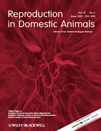
REPRODUCTION IN DOMESTIC ANIMALS
Scope & Guideline
Pioneering Research for Sustainable Agriculture
Introduction
Aims and Scopes
- Reproductive Physiology:
Research on the physiological mechanisms governing reproduction in domestic animals, including hormonal regulation, gametogenesis, and reproductive cycles. - Artificial Reproductive Technologies (ART):
Studies involving techniques such as artificial insemination, in vitro fertilization, and embryo transfer aimed at enhancing breeding efficiency and genetic improvement. - Genetics and Genomics:
Exploration of genetic factors influencing reproductive traits, including genetic mapping, genomic selection, and the role of specific genes in fertility. - Embryo Development and Quality Assessment:
Investigations into the factors affecting embryo quality, development, and viability, including the impact of environmental stressors and cryopreservation techniques. - Reproductive Disorders and Pathology:
Studies focusing on reproductive health issues, including endometritis, infertility, and the impact of infections on reproductive performance. - Nutritional and Metabolic Influences:
Research into how nutrition and metabolic conditions affect reproductive performance, embryo development, and overall health in domestic animals. - Innovative Technologies in Reproduction:
Application of new technologies and methodologies, such as molecular biology techniques and bioinformatics, to enhance understanding and improvement of reproductive outcomes.
Trending and Emerging
- Advanced Genetic Technologies:
There is a growing interest in the application of CRISPR and other gene-editing technologies to improve reproductive traits and animal health, indicating a shift towards precision breeding. - Microbiome and Reproductive Health:
Research exploring the role of the microbiome in reproductive health is on the rise, emphasizing its impact on fertility and overall reproductive success. - Non-invasive Monitoring Techniques:
Innovations in non-invasive monitoring methods, including the use of imaging technologies and biomarkers for assessing reproductive status, are increasingly prevalent in recent studies. - Stress and Reproductive Performance:
There is an emerging focus on how environmental and physiological stressors affect reproductive outcomes, highlighting the importance of animal welfare in reproductive success. - Sustainable and Ethical Breeding Practices:
Research on sustainable practices and the ethical implications of reproductive technologies is gaining traction, reflecting a broader societal concern for animal welfare and environmental sustainability. - Nutritional Genomics in Reproduction:
The intersection of nutrition and genomics in influencing reproductive performance is becoming a prominent area of research, indicating a holistic approach to animal reproduction.
Declining or Waning
- Traditional Breeding Practices:
There has been a noticeable decline in research focused on conventional breeding methods as emphasis shifts towards advanced reproductive technologies and genetic selection methods. - Basic Reproductive Physiology Studies:
Research that solely focuses on fundamental reproductive physiology without application to practical breeding or reproductive technologies seems to be less common, as there is a growing preference for applied research. - General Veterinary Reproductive Health:
Publications centered around general reproductive health issues without a specific focus on advancements or innovations are becoming less frequent, possibly due to the increasing specialization within veterinary reproductive sciences. - Historical Perspectives on Reproductive Technologies:
There is a reduced emphasis on historical reviews of reproductive technologies, as the field is moving towards more contemporary applications and innovations in reproductive management.
Similar Journals

Reproductive Biology and Endocrinology
Driving Discoveries in Endocrine Mechanisms and Reproductive HealthReproductive Biology and Endocrinology, published by BMC, is a distinguished open-access journal established in 2003, catering to researchers and professionals in the interdisciplinary fields of reproductive biology, endocrinology, and related biomedical sciences. With a notable impact in 2023, the journal has achieved Q1 rankings in Obstetrics and Gynecology, Reproductive Medicine, and Endocrinology, alongside a Q2 ranking in Developmental Biology, establishing itself as a pivotal source of high-quality research and insights. The journal's commitment to freely accessible research promotes knowledge dissemination across its domains, which is crucial for advancing understanding of reproductive health and endocrine mechanisms. With a robust Scopus ranking showcasing its relevance—17th out of 209 in Obstetrics and Gynecology, and 8th out of 90 in Reproductive Medicine—it serves as an essential resource for academics and clinicians alike, facilitating innovative research and fostering collaboration within the global scientific community.
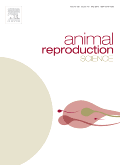
ANIMAL REPRODUCTION SCIENCE
Elevating Understanding of Reproductive PhysiologyANIMAL REPRODUCTION SCIENCE, published by Elsevier, is a leading journal dedicated to the field of animal reproduction and developmental biology. With an ISSN of 0378-4320 and an E-ISSN of 1873-2232, it serves as a vital resource for researchers, professionals, and students interested in advancing their understanding of reproductive mechanisms across various species. The journal has been recognized for its high-quality contributions, achieving a Q1 ranking in Animal Science and Zoology and showcasing its significant impact in the areas of Endocrinology and Veterinary Medicine as per the 2023 category quartiles. Covering a wide range of topics from reproductive physiology to genetic implications, this journal not only highlights innovative research but also fosters interdisciplinary dialogue in the rapidly evolving world of animal science. Though not currently offering open access, it remains a crucial platform for disseminating pivotal research findings from across the globe. With its rich history dating back to 1936, ANIMAL REPRODUCTION SCIENCE continues to drive excellence in animal reproduction studies, positioning itself at the forefront of the field, and solidifying its relevance in both science and industry.

Reproductive Medicine and Biology
Exploring breakthroughs in reproductive science.Reproductive Medicine and Biology, an esteemed journal published by WILEY, stands at the forefront of advancements in the field of reproductive health and associated biological sciences. With an impact factor that underscores its relevance—ranking in Q1 for Reproductive Medicine and Q3 in Cell Biology—this journal is distinguished by its commitment to disseminating high-quality, peer-reviewed research since its transition to Open Access in 2002. Based in Japan, the journal caters to a global audience, providing vital insights into reproductive biology, therapeutics, and innovative practices. With Scopus rankings placing it at #22 out of 90 in Reproductive Medicine and a commendable percentile ranking, Reproductive Medicine and Biology aims to foster dialogue and knowledge transfer among researchers, professionals, and students, paving the way for breakthroughs in understanding reproductive health.
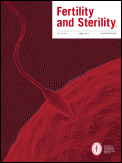
FERTILITY AND STERILITY
Pioneering insights into fertility and sterility.Fertility and Sterility is a prestigious peer-reviewed journal dedicated to the fields of obstetrics, gynecology, and reproductive medicine. Published by Elsevier Science Inc, this journal has been a cornerstone of scientific discourse since its inception in 1950 and is set to continue its influential coverage of cutting-edge research until 2024. Boasting an impressive impact factor, Fertility and Sterility is ranked among the top-tier journals in its category, holding Q1 status in both Obstetrics and Gynecology and Reproductive Medicine. With Scopus rankings placing it in the 97th and 96th percentiles respectively, the publication serves as a vital resource for researchers, clinicians, and students who seek to advance their understanding of fertility issues and reproductive health. Although it does not currently offer open access options, the journal remains committed to disseminating high-quality research and innovative solutions to the complex challenges in reproduction, empowering professionals and scholars to make meaningful contributions in their fields.

European Poultry Science
Pioneering insights in poultry science and animal welfare.European Poultry Science is a distinguished journal published by EUGEN ULMER GMBH CO, dedicated to advancing the field of poultry research and animal science. With an ISSN of 1612-9199, this journal provides an open-access platform for researchers and professionals to disseminate their findings on topics relevant to food animals, particularly poultry. Operating from Germany, the journal has established its significance in the scientific community, evidenced by its Q3 ranking in both the Animal Science and Zoology and Food Animals categories as of 2023. The journal's Scopus rankings further reflect its competitive standing within Veterinary Food Animals and Agricultural and Biological Sciences. As we anticipate the convergence of research from 2014 to 2024, European Poultry Science remains a vital resource for fostering innovation, sharing knowledge, and supporting the development of best practices within the poultry industry, making it an invaluable asset for academics, industry professionals, and students alike.
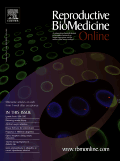
REPRODUCTIVE BIOMEDICINE ONLINE
Exploring the frontiers of reproductive biology and medicine.Reproductive Biomedicine Online, published by Elsevier, is a leading peer-reviewed journal that has established itself as a pivotal resource in the fields of Developmental Biology, Obstetrics and Gynecology, and Reproductive Medicine. With an impressive Impact Factor and a Q1 ranking in its respective disciplines as of 2023, this journal provides a platform for innovative research and comprehensive reviews that contribute to advancements in reproductive healthcare. The journal boasts rigorous Scopus rankings, placing it within the top tiers of its categories, which underscores its significance in shaping contemporary biomedical inquiry. Although not open access, it remains widely accessible through institutional subscriptions, making its wealth of knowledge available to researchers, clinicians, and students alike. Since its inception in 2000, Reproductive Biomedicine Online has been committed to fostering a deeper understanding of reproductive processes and biomedicine, ensuring that its content remains relevant and impactful in addressing challenges in reproductive health, thereby championing exceptional scientific discourse.

International Journal of Fertility & Sterility
Fostering Collaboration for Fertility SolutionsThe International Journal of Fertility & Sterility, published by ROYAN Institute, is a leading academic platform dedicated to advancing knowledge in the fields of obstetrics, gynecology, and reproductive medicine. With an ISSN of 2008-076X and an E-ISSN of 2008-0778, this Open Access journal has been making significant contributions to the scientific community since its inception in 2007. Based in Tehran, Iran, the journal showcases rigorous research and promotes interdisciplinary collaboration, addressing critical topics related to fertility, sterility, and reproductive health. As of 2023, it holds an impressive Q2 ranking in Obstetrics and Gynecology and a Q3 ranking in Reproductive Medicine, underscoring its relevance and impact in the academic sphere, with Scopus ranks placing it at #67 in Obstetrics and Gynecology and #32 in Reproductive Medicine. The journal's commitment to accessibility and quality is reflected in its global readership, making it an essential resource for researchers, healthcare professionals, and students seeking to enhance their understanding of fertility issues and reproductive technologies.

Reproductive Medicine
Connecting Ideas, Cultivating Solutions in Reproductive HealthReproductive Medicine is an esteemed open-access journal published by MDPI, focusing on the latest research and advances in reproductive health, fertility, and assisted reproductive technologies. With its E-ISSN of 2673-3897, the journal aims to provide a platform for researchers, clinicians, and healthcare professionals to disseminate their findings, share innovative practices, and engage in scholarly discourse. Situated in Basel, Switzerland, Reproductive Medicine emphasizes a multidisciplinary approach, exploring biological, clinical, and psychological aspects of reproductive health. Although the journal is in the early stages of establishing metrics such as H-index and Scopus rankings, its open-access model enhances accessibility, allowing for a broad dissemination of knowledge. Committed to fostering advancements in the field, Reproductive Medicine is essential for those seeking to stay at the forefront of reproductive health research.
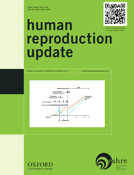
HUMAN REPRODUCTION UPDATE
Unveiling the Latest in Reproductive ScienceHUMAN REPRODUCTION UPDATE, published by Oxford University Press, stands as a leading journal in the fields of Obstetrics and Gynecology and Reproductive Medicine. With an impressive Q1 ranking in both categories according to the 2023 category quartiles and a significant Scopus rank, it is recognized as one of the top journals globally in these disciplines, catering to the most relevant and cutting-edge research. The journal has been a crucial platform for disseminating vital findings and reviews from 1995 to 2024, contributing to advancements in human reproductive health. With its focus on publishing high-quality, peer-reviewed articles, it serves as an essential resource for researchers, healthcare professionals, and students seeking the latest insights and developments in reproductive science. As the journal aims to foster informed discussions and encourage further research, it remains committed to shaping the future of reproductive health and medicine.
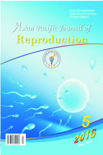
Asian Pacific Journal of Reproduction
Advancing Knowledge Across Species and DisciplinesAsian Pacific Journal of Reproduction is a dynamic open-access journal specializing in a diverse array of topics related to reproduction across various species, including humans, animals, and plants. Published by Wolters Kluwer Medknow Publications, this peer-reviewed journal has been committed to disseminating high-quality research since its inception in 2012. With an accessible ISBN of 2305-0500 and E-ISSN 2305-0519, the journal has rapidly established itself within the academic community, evidenced by its categorization in Q3 and Q4 quartiles across multiple fields, including Obstetrics, Gynecology, and Animal Science. Researchers are encouraged to contribute their findings to foster a deeper understanding of reproductive health and practices in the Asian Pacific region and beyond. The journal's inclusive scope and emphasis on interdisciplinary collaboration make it a crucial platform for professionals and scholars seeking to stay at the forefront of reproductive research.